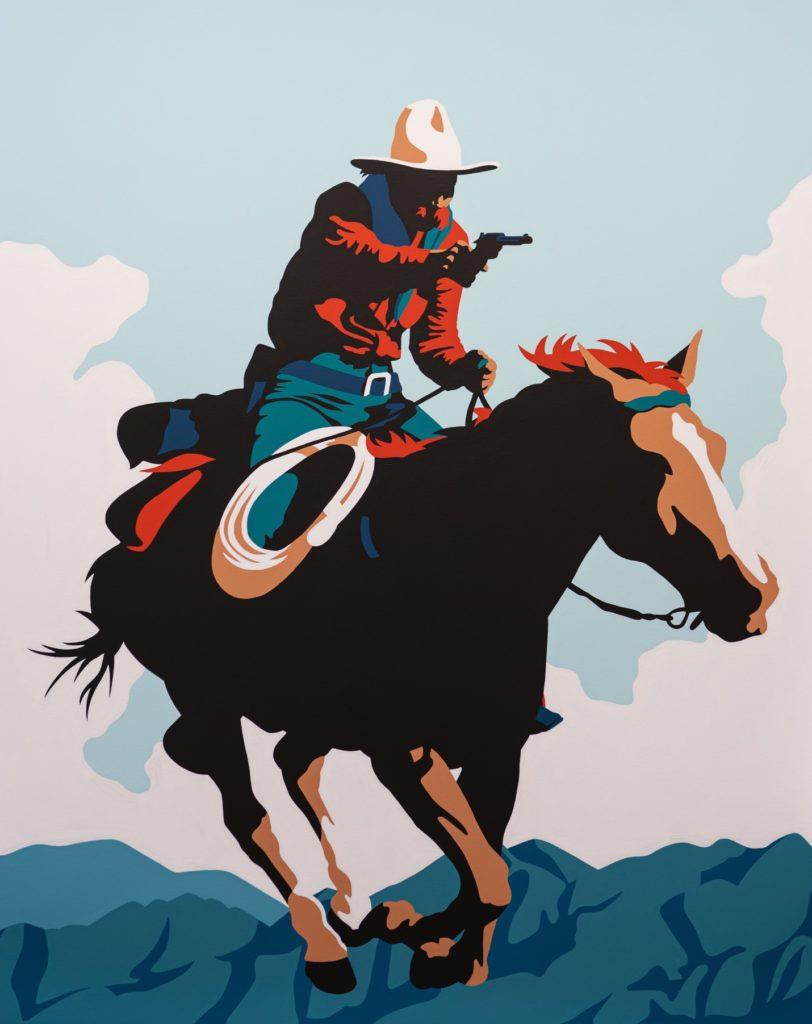The Power Of Shadows: Jeremy Booth's Striking Visual Language
Date
9/3/2024 11:16:40 PM
(MENAFN- USA Art News)
Can you walk us through your creative process from idea to finished piece?
My creative process always begins with an experience, often during the trips my wife and I take to ranches in the West, where we capture photographs for reference. During these moments, I find the inspiration and direction for my work. From there, I sketch and develop compositions based on our gathered imagery. I then create a digital version in grayscale to refine the composition and values, and once I'm satisfied, I work through the color palette. Finally, I bring the piece to life on canvas, carefully translating the digital vision into a physical painting with acrylic.
Where do you typically find inspiration for your work?
The American West and the people who live and work there inspire me. I often visit to capture the landscapes, daily life, and strength of the people and animals through my art. The unfiltered essence of the American West is particularly appealing to me, and it's in those moments that ideas for my pieces start to take shape.
How do you approach finding your artistic voice and maintaining originality?
For me, finding and maintaining my artistic voice has always been about staying true to the moments and experiences that resonate deeply with me. I've always been drawn to minimalism, high contrast, and bold colors, so I lean into those elements consistently.
Maintaining originality comes from filtering everything through my personal perspective-whether a photograph I've taken on a ranch or a specific story I want to tell. I avoid getting too influenced by trends and what others are doing. Instead, I focus on what feels authentic to my style and the narratives I want to convey. It's about creating work that feels honest and connected to my experiences, while always pushing the boundaries of how I can express my perspective visually.

What role does experimentation play in your creative process?
Experimentation is a vital part of my creative process. Although I have a strong foundation in the minimalistic and bold style that defines my work, I am constantly exploring new ways to express the themes and emotions that inspire me.
This might involve trying different compositions, playing with the balance of color and contrast, or adjusting how I depict certain subjects.
It's about more than sticking to what's comfortable; it's about pushing my boundaries and seeing how I can evolve while staying true to my artistic voice. Experimentation keeps my work fresh and helps me discover new techniques and perspectives to elevate a piece. It's a constant process of refining and redefining, ensuring that each artwork reflects my vision, with a dynamic truth
to the experiences I'm drawing from.
Are there any specific artists or movements that have influenced your work?
Yes,
Mark Maggiori's Western artwork inspired me to start painting the West.
As I delved into Western art tradition, artists like Ed Mell, known for his geometric landscapes, and Billy Schenck,
who
is
admired
for his color blocking and use of color, showed me that my visual style belongs in Western art.
How do you balance artistic intuition with technical skill in your artwork?
Balancing artistic intuition with technical skill is crucial to my process. I always begin with intuition, capturing the essence of a moment or an experience which resonates with me. That initial spark is driven by emotion and the story I aim to tell.
From there, I envision the artwork and then utilize technical skills to bring that vision to life. This involves paying close attention to composition, the interplay of light and shadow, and the bold use of color-all of which require a strong grasp of technique. I start by working digitally in grayscale to perfect the composition and values, allowing intuition to guide the process. Once I'm confident in the foundation, I add color and transfer the piece to canvas, ensuring that the technical execution aligns with the initial inspiration.
For me, it's about letting intuition guide the process while using technical skills to clearly and powerfully bring the vision to life. It's a fluid balance, constantly shifting between intuition and technical execution to create work that feels both authentic and refined.
MENAFN03092024005694012507ID1108633535

Legal Disclaimer:
MENAFN provides the information “as is” without warranty of any kind. We do not accept any responsibility or liability for the accuracy, content, images, videos, licenses, completeness, legality, or reliability of the information contained in this article. If you have any complaints or copyright issues related to this article, kindly contact the provider above.